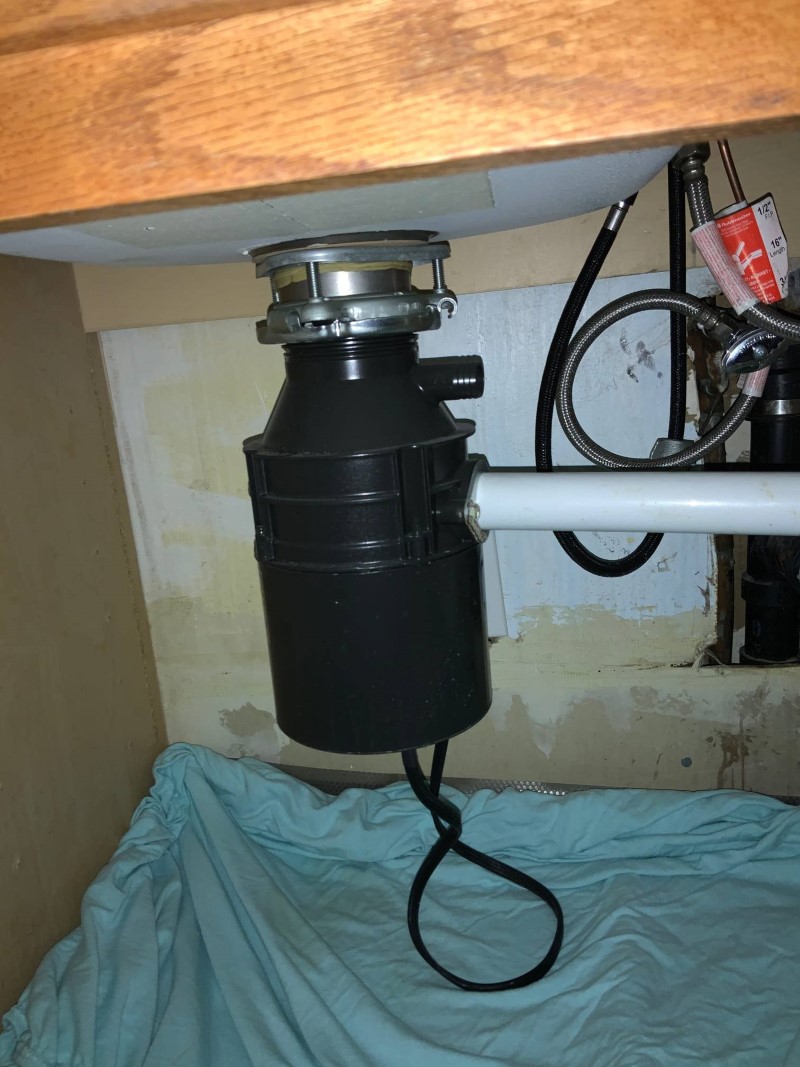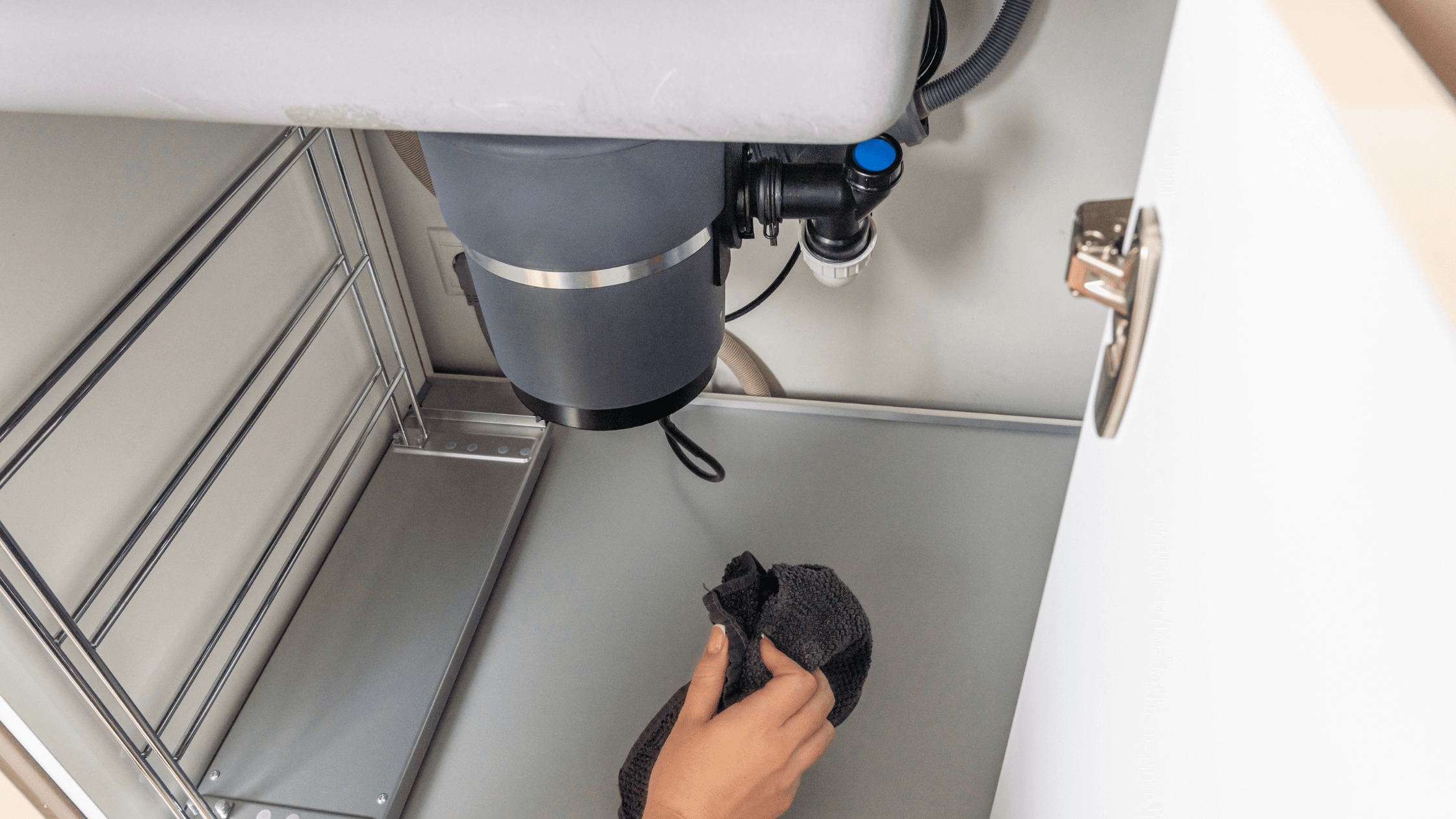Verified Solutions for Fixing a Dripping Garbage Disposal
Verified Solutions for Fixing a Dripping Garbage Disposal
Blog Article
Just how do you actually feel when it comes to Why Is My Garbage Disposal Leaking From the Bottom??

Garbage disposals are crucial kitchen home appliances that help in dealing with food waste successfully. Nonetheless, a leaking waste disposal unit can be a discouraging and messy issue to take care of. The good news is, numerous leaks can be taken care of quickly with a few simple steps. In this post, we will certainly talk about just how to take care of a leaking waste disposal unit efficiently.
Introduction
Waste disposal unit are mounted under kitchen sinks and are designed to shred food waste into smaller items, allowing it to travel through the plumbing system quickly. While these gadgets are usually dependable, leakages can happen over time as a result of deterioration, loose links, or damages to the device.
Step-by-Step Overview to Repairing a Leaking Waste Disposal Unit
Turn Off the Power
Before trying any kind of fixings, guarantee that the power to the garbage disposal unit is shut off to prevent the risk of electric shock.
Situate the Leakage
Recognize the precise location of the leakage and identify the cause
Tighten Links
Utilize a wrench to tighten up any kind of loosened connections between the disposal unit and the pipes system.
Change Seals or Gaskets
If the leakage is due to worn seals or gaskets, eliminate the old components and replace them with new ones.
Patching Fractures or Openings
For fractures or holes in the disposal system, use epoxy or an appropriate patching product to seal the damaged location.
Identifying the Source of the Leakage
Prior to trying to take care of a leaking waste disposal unit, it is important to recognize the resource of the leakage. This can normally be done through aesthetic examination or by conducting basic tests.
Visual Inspection
Examine the garbage disposal system thoroughly for any kind of indicators of water leak. Pay very close attention to areas around seals, gaskets, and connection factors.
Checking for Leakages
One means to check for leakages is by running water via the disposal device and checking for any noticeable indications of leakage.
Common Causes of Leakages in Waste Disposals
Worn Seals and Gaskets
Seals and gaskets play a crucial role in protecting against water from leaking out of the waste disposal unit. Over time, these components can degrade, leading to leaks around the disposal unit.
Loose Connections
The connections in between the garbage disposal and the plumbing system can become loose with time, causing water to leakage out during operation.
Fractures or Holes in the Disposal Device
Physical damages to the waste disposal unit, such as splits or holes in the real estate, can additionally result in leakages.
Devices and Products Needed for Dealing With a Dripping Waste Disposal Unit
Before starting the fixing procedure, collect the essential devices and materials, including a screwdriver, flexible wrench, plumbing professional's putty, replacement seals or gaskets, and epoxy or patching product for fixing fractures or openings.
Evaluating the Garbage Disposal After Repair
When the repair service is total, check the waste disposal unit by running water through it to make sure that the leakage has actually been dealt with.
Preventive Maintenance Tips to Stay Clear Of Future Leakages
To stop future leaks, it is important to do normal maintenance on your garbage disposal. This consists of maintaining it clean, staying clear of placing non-food products or hard items down the disposal, and regularly checking for leaks or other concerns.
Final thought
Finally, fixing a leaking garbage disposal is a relatively straightforward process that can be finished with standard tools and materials. By complying with the steps laid out in this article and exercising preventive upkeep, you can maintain your garbage disposal in good working condition and prevent expensive repair services in the future.
What to Do About a Leaking Garbage Disposal
A leaking garbage disposal often goes unnoticed until you confront a sopping cabinet, a foul-smelling puddle, or an audible drip-drip-drip from the unit. The fix can be frustrating, too, because the leak can stem from a number of components in the system. Fortunately, with a little sleuthing, you can zero in on the leak and—depending on the exact location—stop the icky oozing and repair the component that caused it. Worst case scenario, if it turns out that the garbage disposal must be replaced, installing a new one is a reasonable do-it-yourself task for those with basic plumbing skills. Read on to keep the cash you’d otherwise hand over to a pro.
Prepare to find the leak
Prior to testing the garbage disposal for leaks, unplug it at the wall outlet and turn off the power from the breaker box to prevent electrical shock. Then insert a watertight sink stopper into your sink drain and wipe the unit dry with a clean cloth. In any handy container, mix a few drops of food coloring into a few cups of water, and pour the dyed water onto the sink stopper to help you locate the leak.
Investigate the source
the top, where the disposal meets the sink drain the side, where the dishwasher hose or main drain pipe connects to the disposal or the bottom of the unit Inspect each of these locations while gliding a light-colored rag over the unit; the dyed water will readily show on the rag and reveal the location of the leak. If a leak isn’t immediately apparent, remove the sink stopper and pour a few more cups of dyed water down the sink drain, then check for leaks again. Leaks near the top of the unit are more likely to show themselves while the sink is plugged, while side and bottom leaks are more noticeable while the sink is unplugged.
The metal sink flange that sits directly inside the sink drain is typically sealed around the top with plumber’s putty (a clay-like sealant) and then secured from under the sink with bolts. If the plumber’s putty deteriorates, or the bolts loosen, the flange can no longer form a watertight seal between the sink drain and the disposal—which could cause a leak at the top of the unit.
To reseal the leaky flange, you must first detach the garbage disposal. Start by loosening the screws securing the main drain pipe to the disposal, then loosen the screws in the metal clamp securing the dishwasher hose to the disposal and detach the drain pipe and dishwasher hose from the disposal. Loosen the screws in the mounting ring that connects the disposal to the metal mounting assembly beneath the sink, then pull down the disposal and carefully set it on a clean, dry surface. Loosen the bolts in the mounting assembly with a wrench, then pull down the mounting assembly and set it near the disposal.

We had been made aware of that write-up on How to fix a pretty consistent leak from my garbage disposal from someone on our other web page. Those who enjoyed reading our blog posting kindly remember to share it. We recognize the value of reading our article about The Handy Guide To Fixing Your Garbage Disposal Leaking.
Click Here Report this page